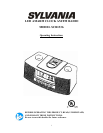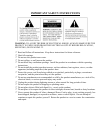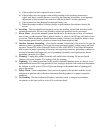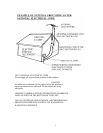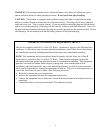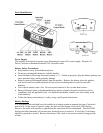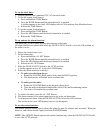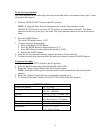4
c) If the product has been exposed to rain or water.
d) If the product does not operate when used according to the operating instructions.
Adjust only those controls that are covered by the operating instructions as an improper
adjustment of other controls may interfere with the product’s normal operation.
e) If the product has been dropped or damaged in any way.
f) When the product exhibits a distinct change in performance-this indicates a need for
service.
16. Servicing - The user should not attempt to service the product beyond that described in the
operating instruction. All servicing should be referred to qualified service personnel.
17. Power Lines - An outside antenna system should not be located in the vicinity of overhead
power lines, or other electric light or power circuits, or where it can fall into such power lines
or circuits. When installing an outside antenna system, extreme care should be taken to keep
from touching power lines or circuits as contact with them might be fatal.
18. Outdoor Antenna Grounding - If an outside antenna is connected to the receiver, be sure the
antenna system is grounded so as to provide some protection against voltage surges and built
up static. Section 810 of the National Electrical Code ANSI/NEFA 70 provides information
with respect to proper grounding of the mast and supporting structure, grounding conductress,
location of antenna-discharge unit, size of grounding electrodes, and requirements for the
grounding electrode (see figure).
19. Cleaning - Unplug this product from the wall outlet before cleaning. Do not use liquid
cleaners or aerosol cleaners. Use a damp cloth for cleaning.
20. Lightning - For added protection for this product during a lightning storm, or when it is left
unattended and unused for long periods of time, unplug it from the wall outlet and disconnect
the antenna or cable system. This will prevent damage to the product due to lightning and
power-line surges.
21. Safety Check - Upon completion of any service or repairs to this product, ask the service
technician to perform safety checks to determine that the product is in proper operation
condition.
22. Overloading - Do not overload wall outlets, extension cords, or integral convenience
receptacles as this can result in a risk of fir or electric shock.



